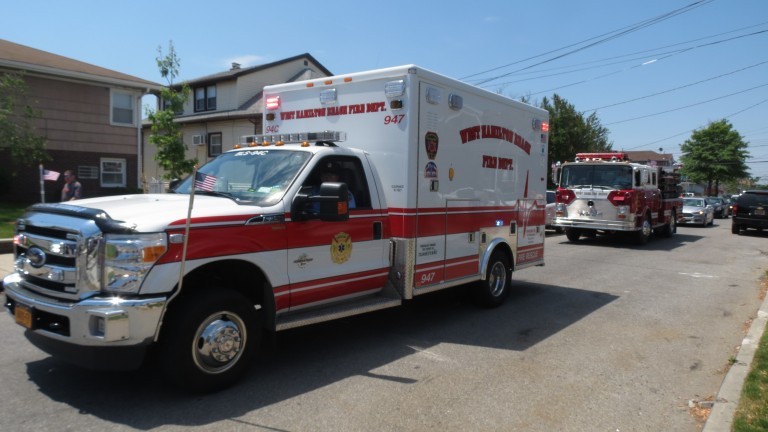PHOTO: Assemblyman Goldfeder is calling for the installation of traffic signal preemption systems to allow FDNY, volunteer fire department and other EMS vehicles to control traffic lights during emergency responses. File Photo
Assemblyman Phil Goldfeder (D-Howard Beach) this week called on the city to install traffic preemption systems to allow FDNY, volunteer fire department and other emergency medical service vehicles to control traffic lights while responding to crises.
In a letter to Department of Transportation Commissioner Polly Trottenberg, Goldfeder requested that the city install the preemption systems at major intersections in all five boroughs so that first-responder vehicles can control traffic lights while passing through the junctions on emergency calls. The Assemblyman cited recent reports of increases in EMS response times in Queens and around the city.
According to the most recent Queens Performance Indicator statistics provided by the city Fire Department, borough EMS response times averaged 8:36 overall and 7:27 for cardiac arrests, choking, and other life-threatening medical emergencies during the month of August. The same reports show a 20 second increase in response times for life-threatening emergencies over the same period last year. In the Bronx, current overall response times reached nearly 11 minutes last month, the highest in the city.
“During an emergency, every second counts. Red lights and traffic jams can mean life or death for patients en route to the hospital. Traffic conditions also put emergency responders at risk of accidents and jeopardize valuable emergency response vehicles,” Goldfeder said. “Installing traffic preemption systems in the city can reduce response times and help save lives. I urge the city to act immediately and put this technology to use.”
Currently, various Emergency Vehicle Preemption technologies are available and can employ traffic signal-mounted infrared, sound or radio-based systems, Goldfeder said. Using equipment installed in emergency vehicles, first responders can trigger traffic lights as they approach intersections. The cost of installing and maintaining the systems ranges depending on the equipment used and the number of intersections installed with the equipment.
EVP systems, Goldfeder noted, have a documented record of reducing EMS response times and operating costs in cities around the country. A 2006 Federal Highway Administration report indicated that roughly 20 percent of traffic signals in the 78 largest metropolitan areas across the country are equipped with EVP technologies, including Nassau County.
The FHA report cited three cases in particular – St. Paul, Minn., Fairfax County, VA, and Plano, Texas – where EVP is used at every intersection, Goldfeder noted. The report found that each municipality experienced reductions in response times and crashes involving EMS vehicles. In Plano, EMS vehicle intersection crashes were reduced to less than one every five years, from an average of 2.3 per year. Municipalities also saw significant cost reductions as improved response times increased the efficiency of EMS stations, the report states.
By Forum Staff

